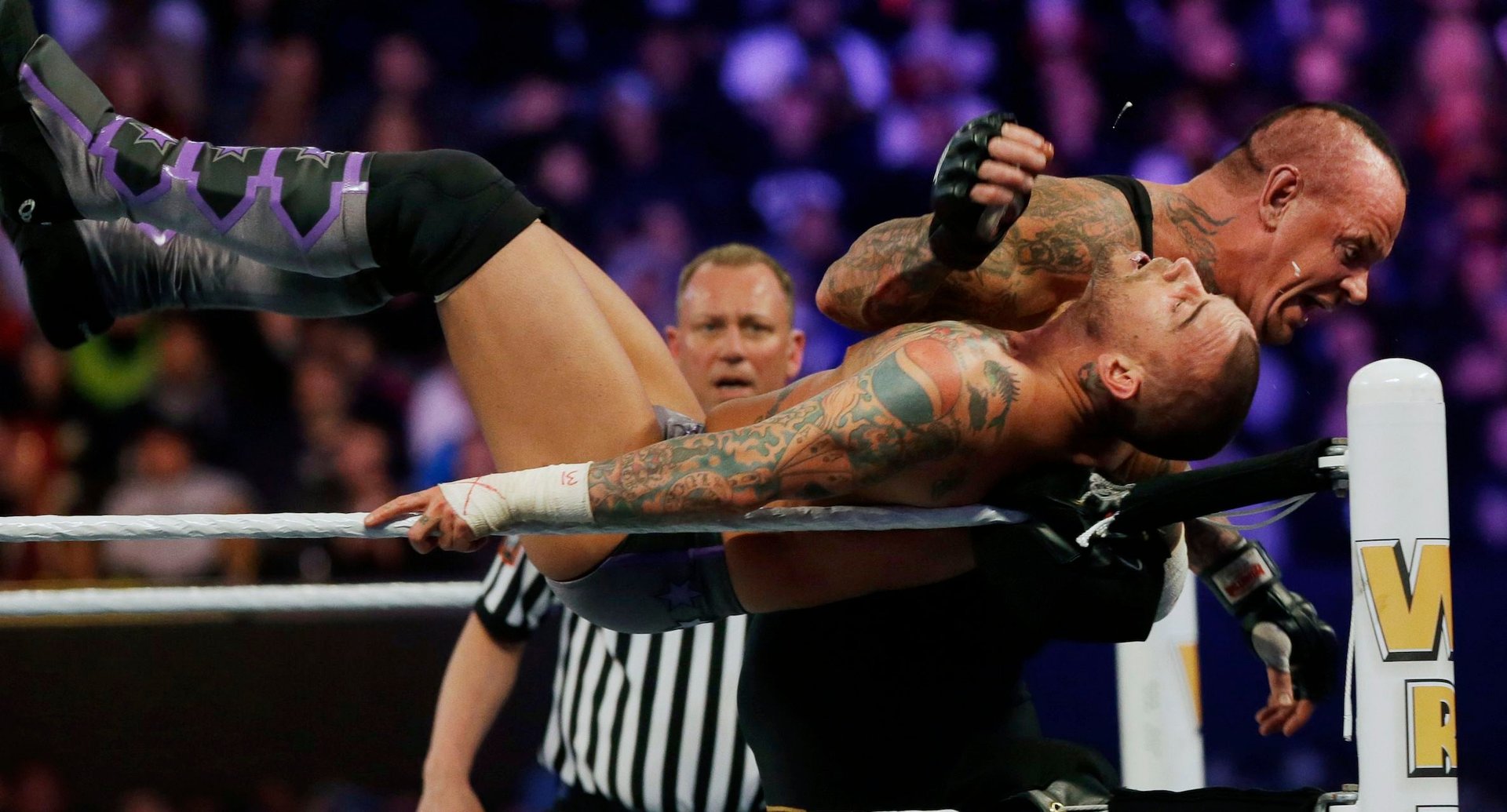The fighting is real, but the UFC still longs for the showmanship of pro wrestling
The Ultimate Fighting Championship has come a long way since it launched in 1993 as a fight club that pitted “black belts against sumo wrestlers and kickboxers against jujitsu masters” to see which fighting style prevailed. UFC is now the premier home of mixed martial arts, a melange of fighting techniques that lets pretty much anything but eye-gouging go.


The Ultimate Fighting Championship has come a long way since it launched in 1993 as a fight club that pitted “black belts against sumo wrestlers and kickboxers against jujitsu masters” to see which fighting style prevailed. UFC is now the premier home of mixed martial arts, a melange of fighting techniques that lets pretty much anything but eye-gouging go.
Fights are brutal and—unlike in pro wrestling—clearly real. In fact, one last year ended in one of the sport’s biggest superstars snapping his leg during a match (think carefully before clicking the link). It’s hugely popular (paywall) and enormously lucrative.
So why does the UFC need to borrow from the flamboyant, theatrical world of World Wrestling Entertainment? CM Punk, an acerbic, cerebral athlete who was one of WWE’s biggest stars until he abruptly left in January amid allegations of working with concussions and through injuries, announced that he will join the UFC next year:
The UFC has said they’ll bring him in slowly, and that kind of special treatment hasn’t gone down well with some of the current UFC fighters, who were less than pleased by the spotlight on Punk:
But the reason for the move is pretty simple: growth. Punk and the WWE are popular and well-known by the general public, which brings new viewers to the sport.
So far, the UFC hasn’t really generated any true stars. Georges St-Pierre had a small role as a bad guy in the Captain America sequel earlier this year, and Ronda Rousey was an Expendable, but that’s about it. Would you even know who headlined the main event last Saturday when Punk announced his move? None are anything like The Rock.
Most UFC fighters could kick your ass, but they would do it without much flair. The biggest star in the UFC so far has been Brock Lesnar, a huge hulking brute with a dagger tattooed on his chest—who came to the sport from pro wrestling and is now back in the WWE as the world champion. In 2009, Lesnar headlined UFC 100, which is perhaps the highest-selling UFC pay-per-view of all time with 1.6 million buys.
But in 2013, only one UFC pay-per-view cracked the 1 million mark. By contrast, the last three Westlemanias—the WWE’s annual marquee event—have done more than 1 million buys each. To get bigger, the UFC needs to become more like the WWE—which has in the past drawn in mainstream stars such as Donald Trump, Mike Tyson, and Floyd Mayweather to boost sales.
As Grantland’s wrestling observer, David Shoemaker, noted:
It’s no secret that UFC has learned a lot from WWE—the video packages, the mythmaking, the gravitation toward more outgoing fighters. And Punk is certainly in that last category. Just days ago, UFC president Dana White said he’d be interested in Punk and Lesnar (whose WWE contract expires next year), although White admitted he didn’t “know if [Punk] can fight or anything like that.”
Punk’s entry to the octagon is a smart move for the UFC. But as he is faced with a bunch of hard-heads who hate his guts, it remains to be seen whether it’s a smart move for Punk.